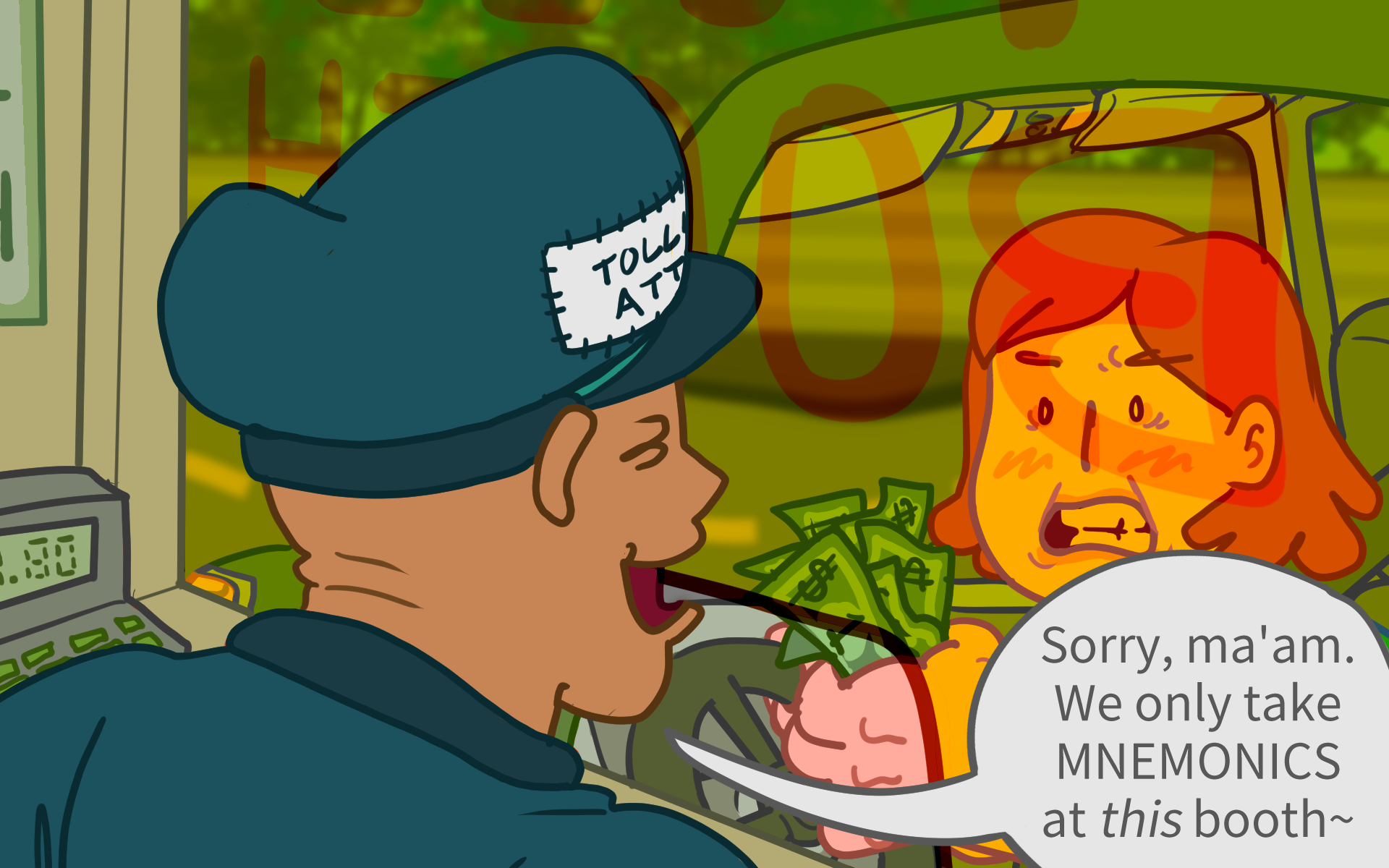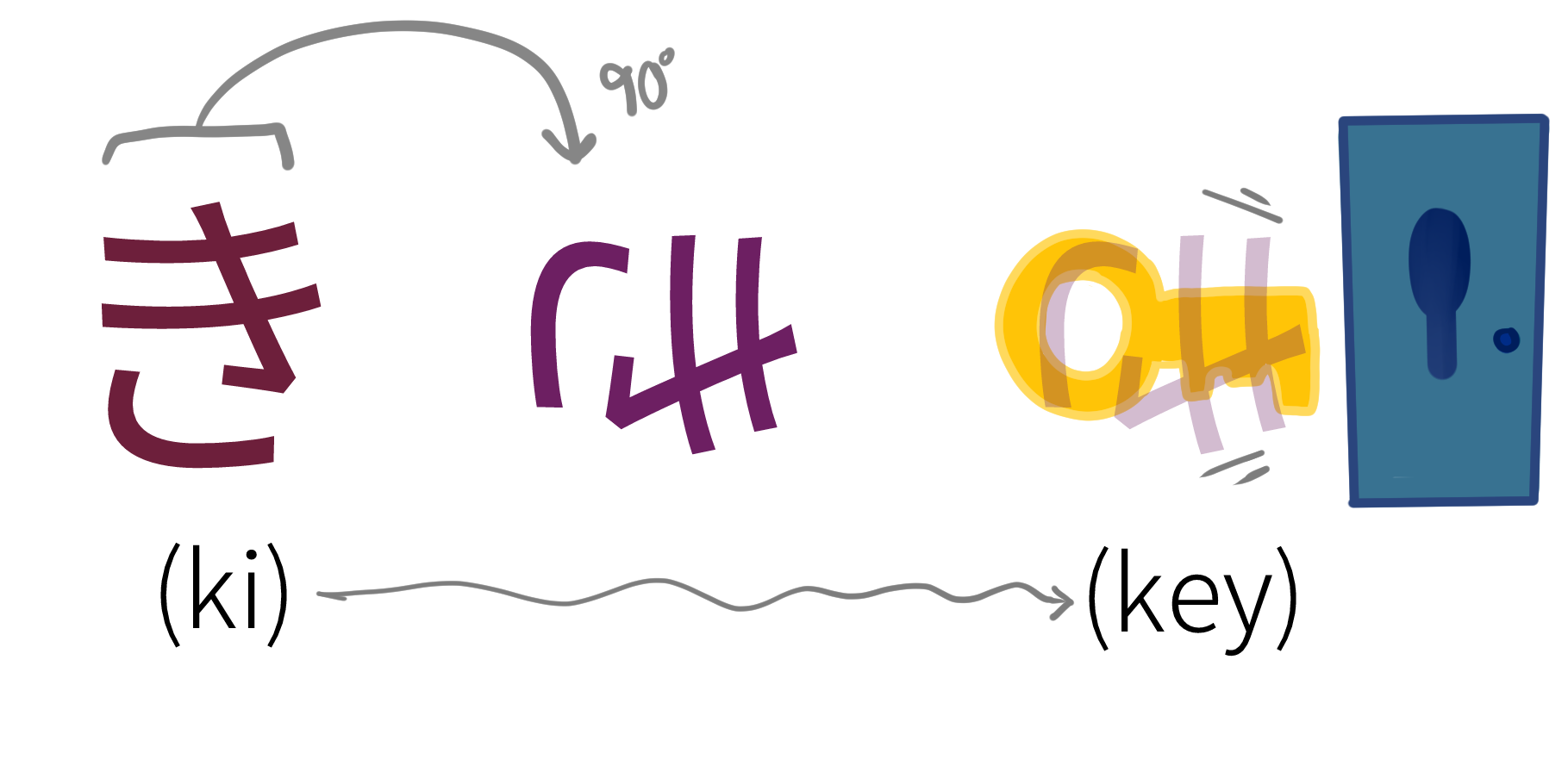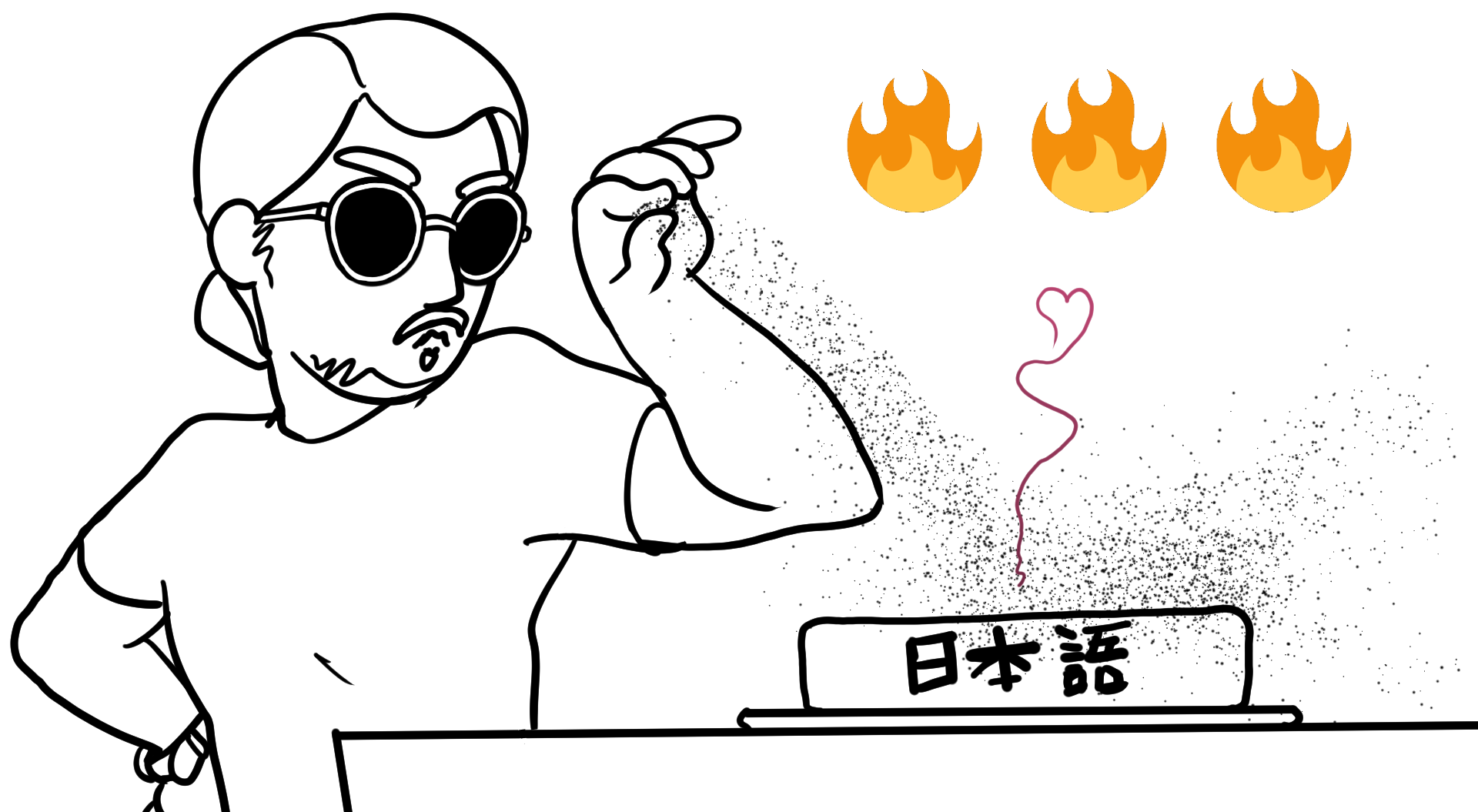Learn Japanese better with mnemonic devices Level up your lessons with a useful tool that creates a mental shortcut when learning!
This insight was originally published on February 01, 2022, and transferred here later.
I love learning Japanese, and spend a lot of time cramming swaths of the topic in my head– but a lot of times I find that things just dont "stick". It is a normal aspect of the learning process, and an unfortunate fate; but sometimes things just take much longer to mentally absorb than others. When that happens, I turn to one of my favourite learning tactics: exploiting the power of mnemonic devices!
What are mnemonic devices?
Looking past it's very unique sounding name, a mnemonic device is the word for a mental tool that helps you learn something entirely new by associating it with something more familiar or relateable! Mnemonic devices are like a toll road for your brain's memory. Normally you'd take a normal, slower road while driving somewhere; BUT if you pay the scoundrels at a toll booth, you get a drive that takes less time and has no pot holes! Mnemonics works similarly in that they give you a shortcut to your learning destination. There is a catch though~
If a mnemonic device doesn't already exist for what you are trying to learn in Japanese, you have to make one yourself. That is the toll.

How to make & use a mnemonic devices
Mnemonics are pretty simple to use. All you have to do is think about them when thinking about the Japanese lesson you are learning. If you need a reminder for what you were trying to learn, the mnemonic device acts as a jumpstart for your memory. It is distubingly simple, yet effective...
There are different types of mnemonic devices to work with. So if one doesn't work or make sense during a Japanese lesson, then you can try using a different one instead!
Imagery mnemonics
These mnemonics use imagery to get an idea across. It can be something more technical, like a diagram; or something a little more fun, like symbols & icons. Here is a Japanese language mnemonic with imagery:

Jingles & poetry
Using rhythm and melody are surprisingly effective as a mnemonic device. Things like the alphabet song are easy to refer to because music is much more catchy than blandly reciting words by rote. Even rhymes & rhythm work well without a distinct melody; as seen with the English grammar mnemonic "I before E except after C". Here is a Japanese language mnemonic with a jingle:
Conjugating to the て form of verbs can be remembered by using a couple melodic verses from the folk song "Oh My Darling Clementine":
い・ち・り → って
み・び・に → んで
き → いて
ぎ → いで
For those not familiar with the melody for this mnemonic~:
Puns & wordplay
Humor is a great way to make things more memorable. So naturally, using a pun or other types of wordplay make a great mnemonic device! Check out one of these very super cool Tweets to see a mnemonic pun for learning Japanese in action:
Acronyms & cyphers
This type of mnemonic is a weird one. The trick to an acronym or cypher mnemonic is to associate the items you are trying to learn with numbers, letters, or words as a placeholder to represent the new concept.
Why? The idea is if you have a smaller, more bite-sized piece of information to think about, then it acts as a placeholder to spark your memory for the rest of the idea it represents. In mathematics, examples like "PEMDAS" & "May I have a large container of orange juice?" are great examples of this! Here are some examples of this kind of mnemonic for learning Japanese:
Japanese months are literally just the numbers:
一月(いち・がつ) / (1st・month)= January
十二月(じゅうに・がつ) / (12th・month)= December
Remembering the order of the Japanese days of the week?:
"No Grifting, Karen! Store Managers Kindly Detest."
N = nichiyoubi (Sunday)
G = getsuyoubi (Monday)
K = kayoubi (Tuesday)
S = suiyoubi (Wednesday)
M = mokuyoubi (Thursday)
K = kinyoubi (Friday)
D = doyoubi (Saturday)
Associations
This type of mnemonic is all about using something you already know to act as the foundation for new information. This type of mnemonic is helpful because sometimes the topic you are learning directly expands upon the last one you learned; and sometimes it can be something completely unrelated other than a superficial similarity. Here are a couple examples of this mnemonic type for learning Japanese:
If your native language is English, your adjectives go before nouns in a sentence. This is true for Japanese too!
If your native language is English, your verbs go before the thing they act upon. It is the OPPOSITE in Japanese!
Japanese uses a lot of loanwords borrowed from other langauges. パン (pan), for example, might be one that is familiar to a lot of people who speak Romantic langauges.
Your friend, named Sarah, accidentally broke her mom's favourite plate.The Japanese word for plate is 皿(さら・sara). Boom~ an association!
Why do they work?
The main reason why mnemonic devices work so well is because, at their core, they are making what we learn more meaningful. Whether it is adding a goofy sentence to represent a new concept or singing the lesson to a melody, it adds a new association to connect with your lesson. Furthermore, it provides an extra flavour that is more interesting and engaging than the lesson originally was. Mnemonics act as that extra spice to mix in with your learning plan's recipe to make it more palatable.

What things can mnemonics help you learn?
Trick question~! You can use a mnemonic devices to help you learn almost anything really. The limitations mostly depend on what kind of mnemonic device(s) work best with the particular topic you're attempting to learn. It also ultimately depends on what resonates for you and your needs. To help with your Japanese, you can start using mnemonics for:
- Pronunciation
- Writing
- Vocabulary
- Grammar
- All that, AND the kitchen sink~
If you want to get more mnemonic devices for learning Japanese in your life, I Tweet about them occasionally @NihongoFamiliar. ~Hit me up! You can also make requests, of course. 😊
